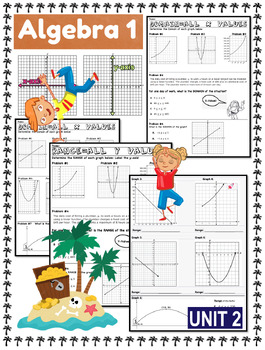Unit 2: Domain and Range of Discrete and Continuous Functions
- Zip
Description
Students will practice finding the domain and range of discrete and continuous functions given ordered pairs, tables, graphs, equations, mappings, and real life problems.
Guided notes with a PowerPoint Presentation allow for students to stay focused, grasp new concepts and retain information. Students can add their own creativity to the lesson.
This product also includes an assessment. Students must determine the domain and range of the function.
TEK - A.2 A - determine the domain and range of a linear function in
mathematical problems; determine reasonable domain and range values for real world situations, both continuous and discrete; and represent domain and range using inequalities
40 Animated Slides! Full Guided Explanation and Practice.
And
25 Pages Included: Notes, Practice, Homework, Assessments.


